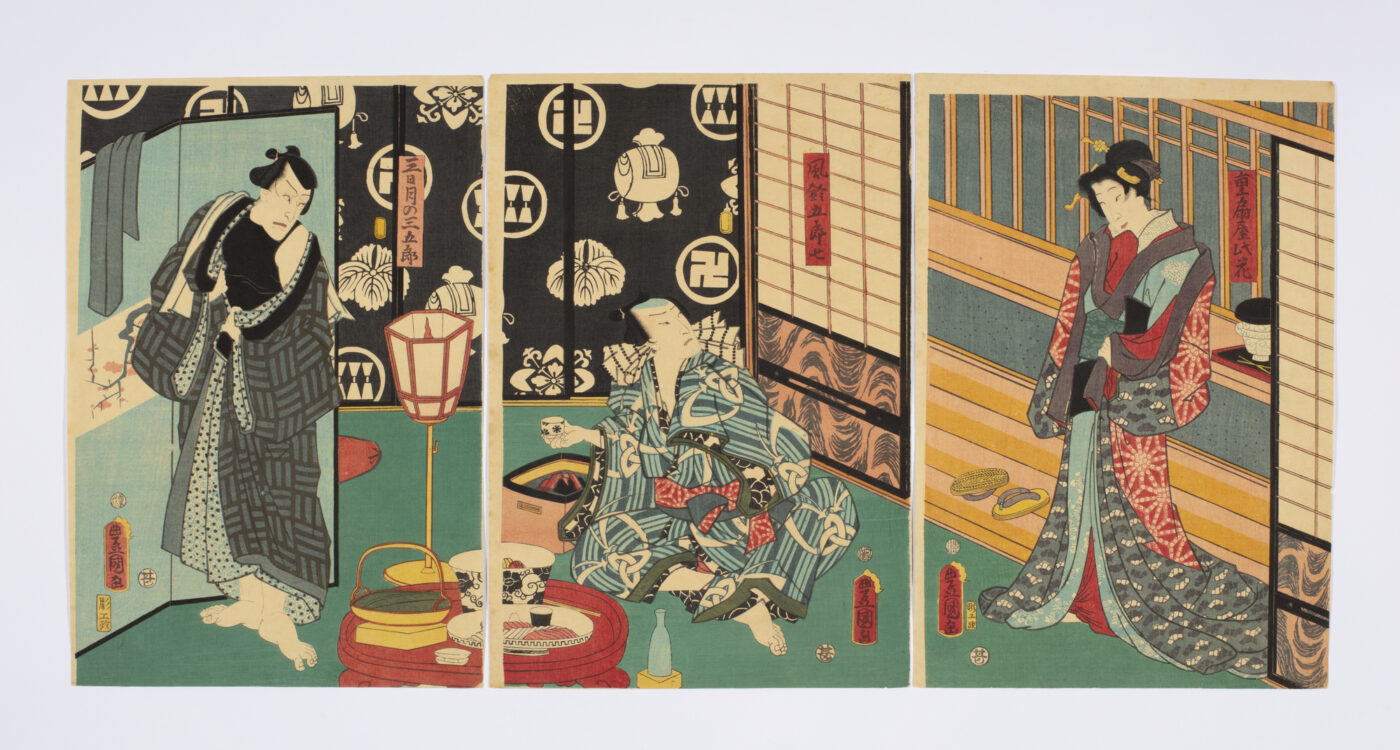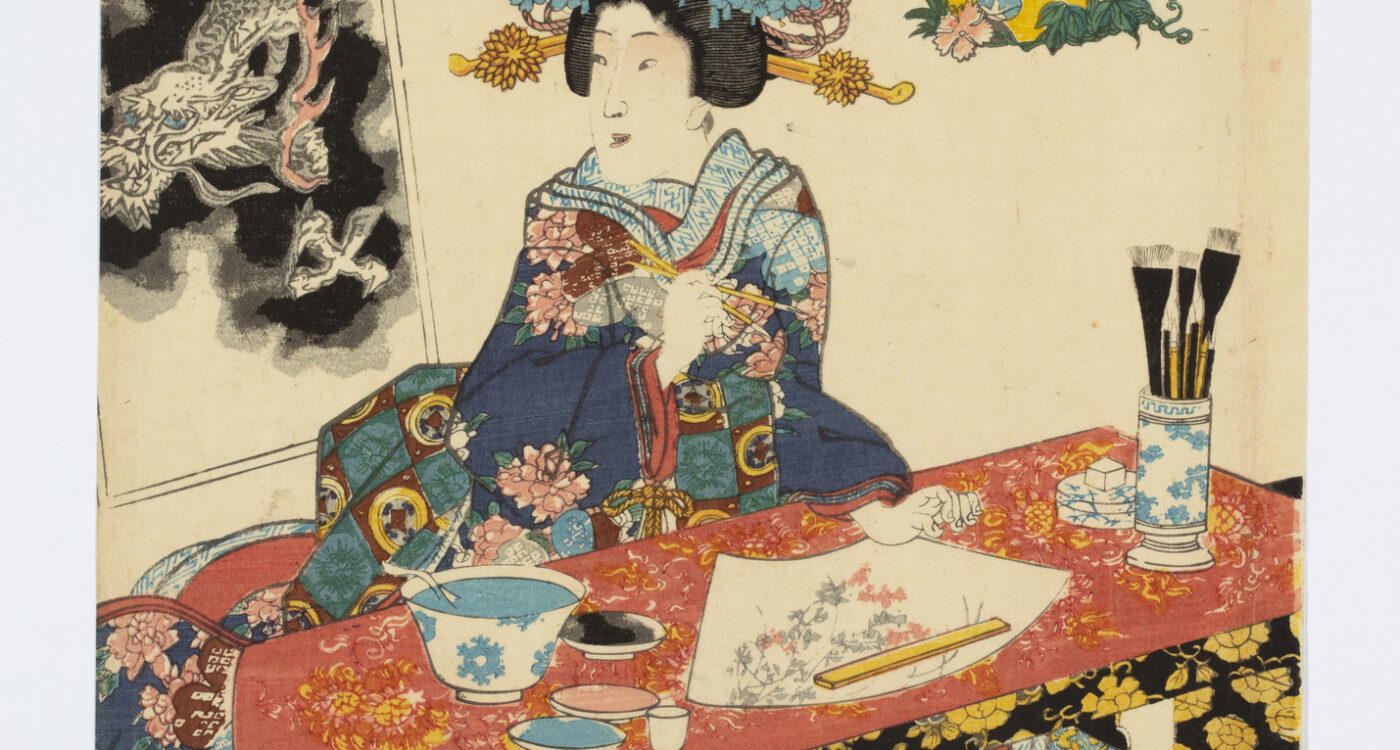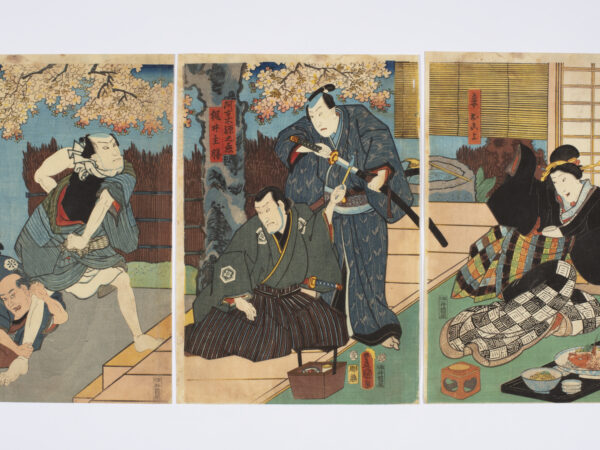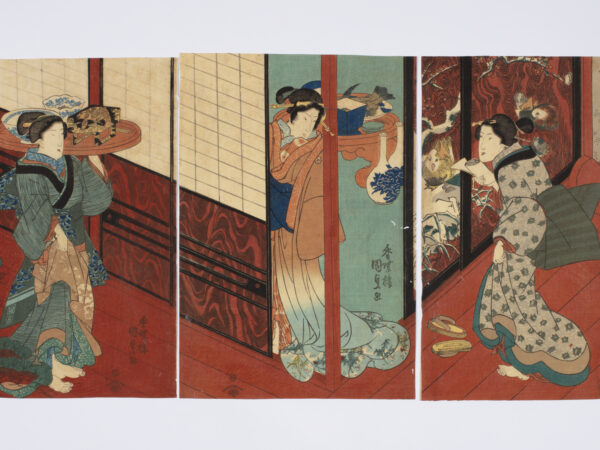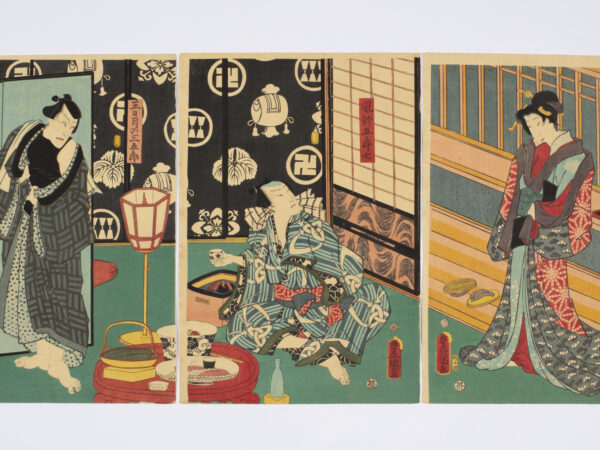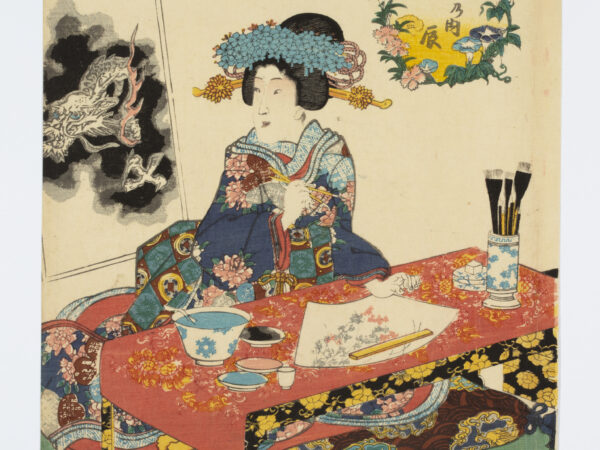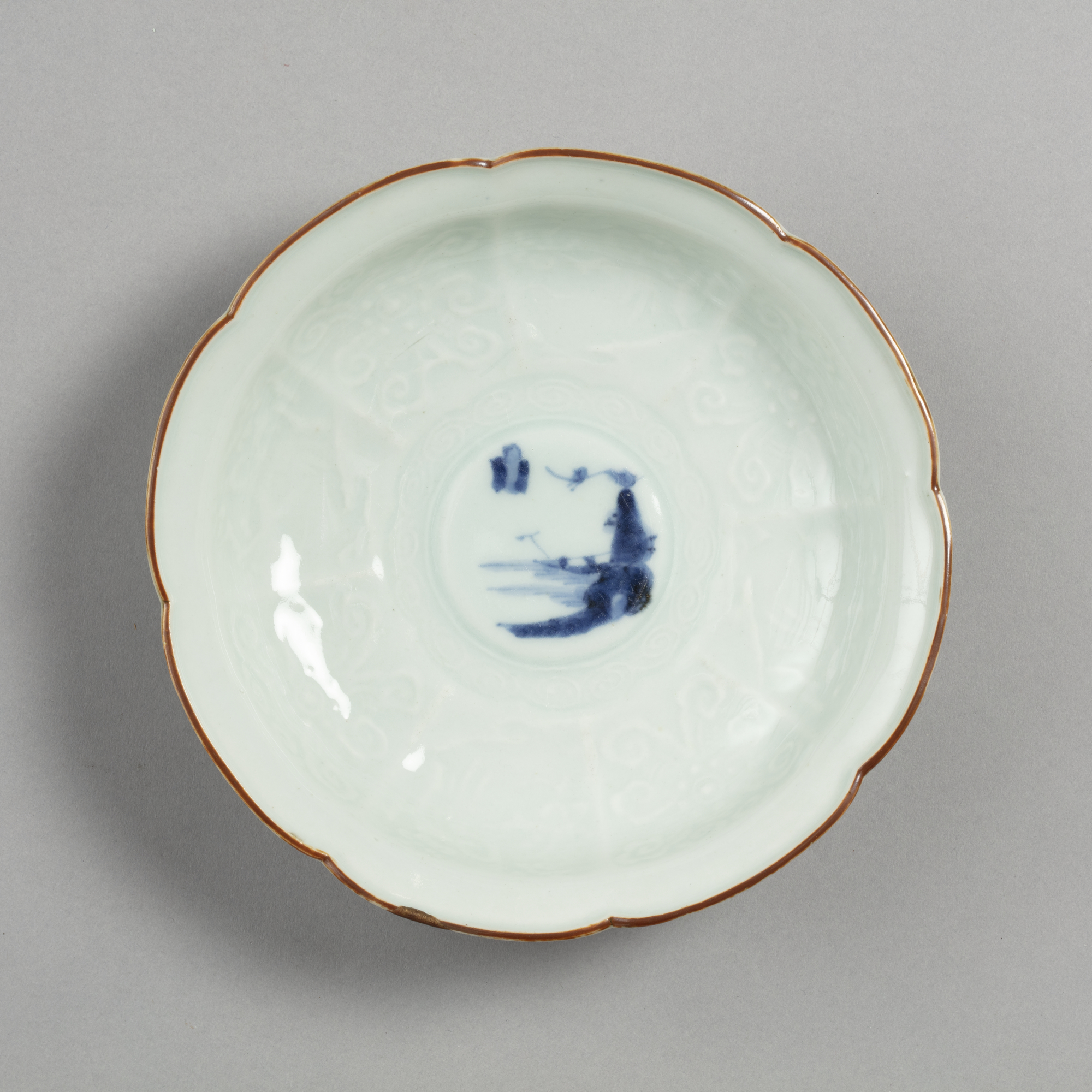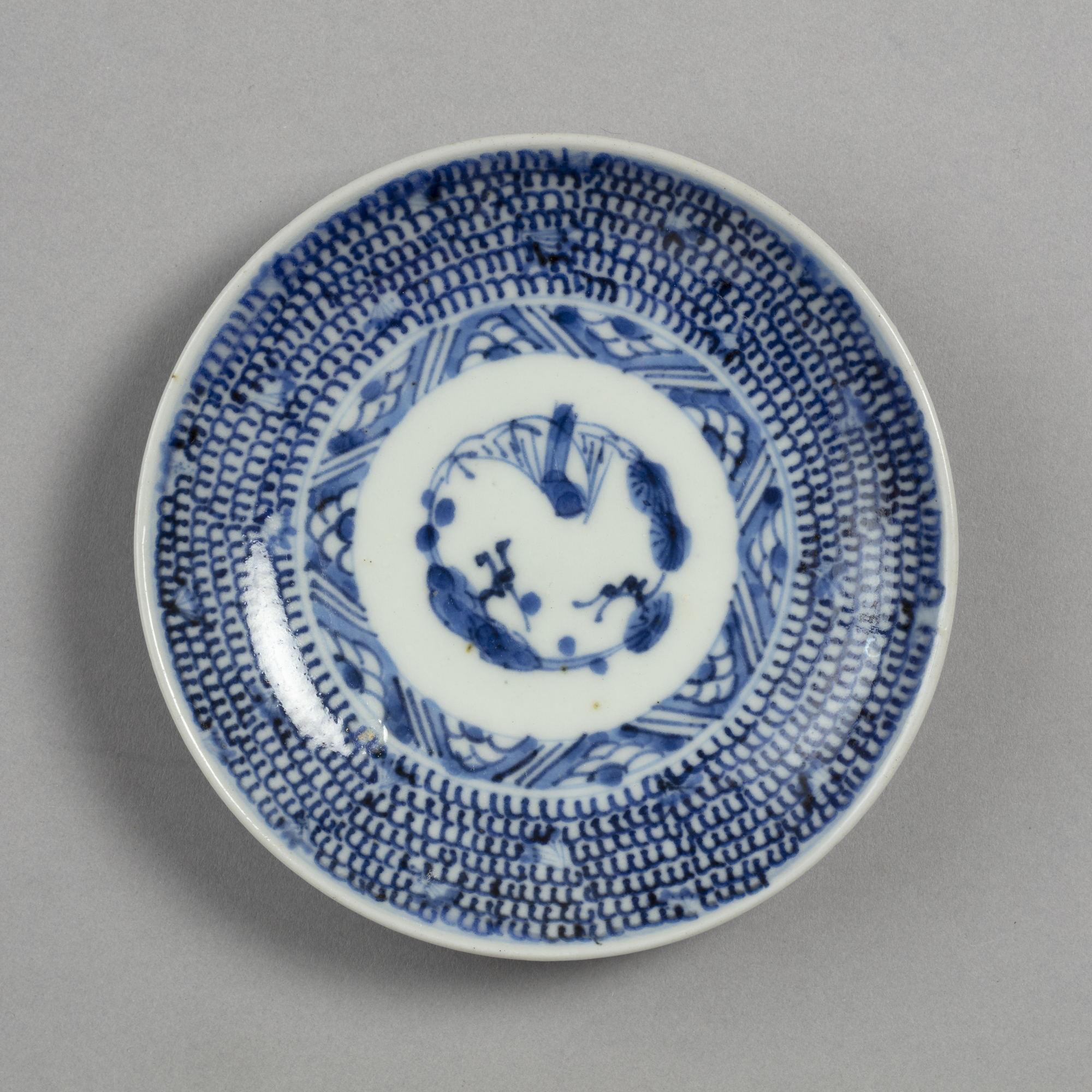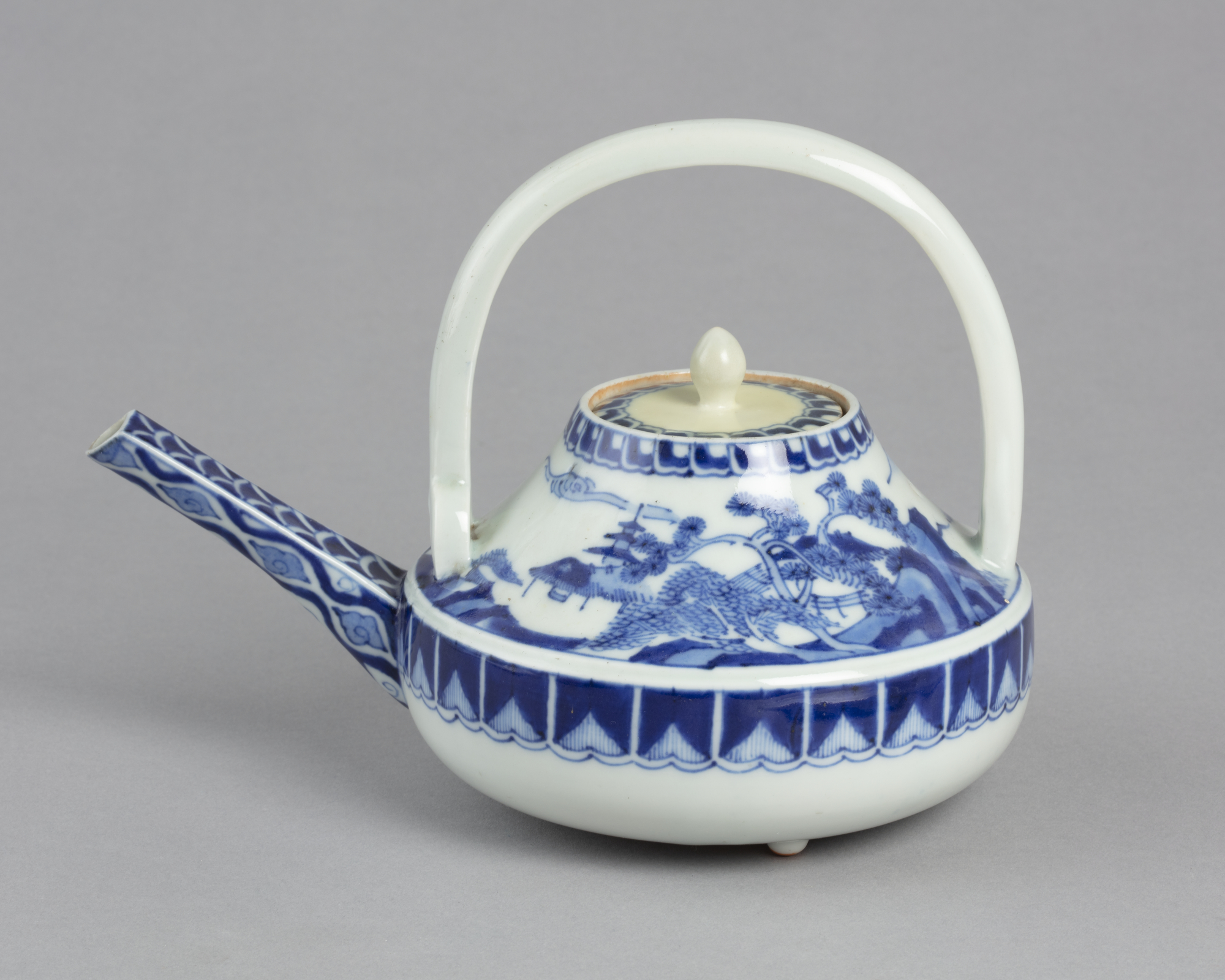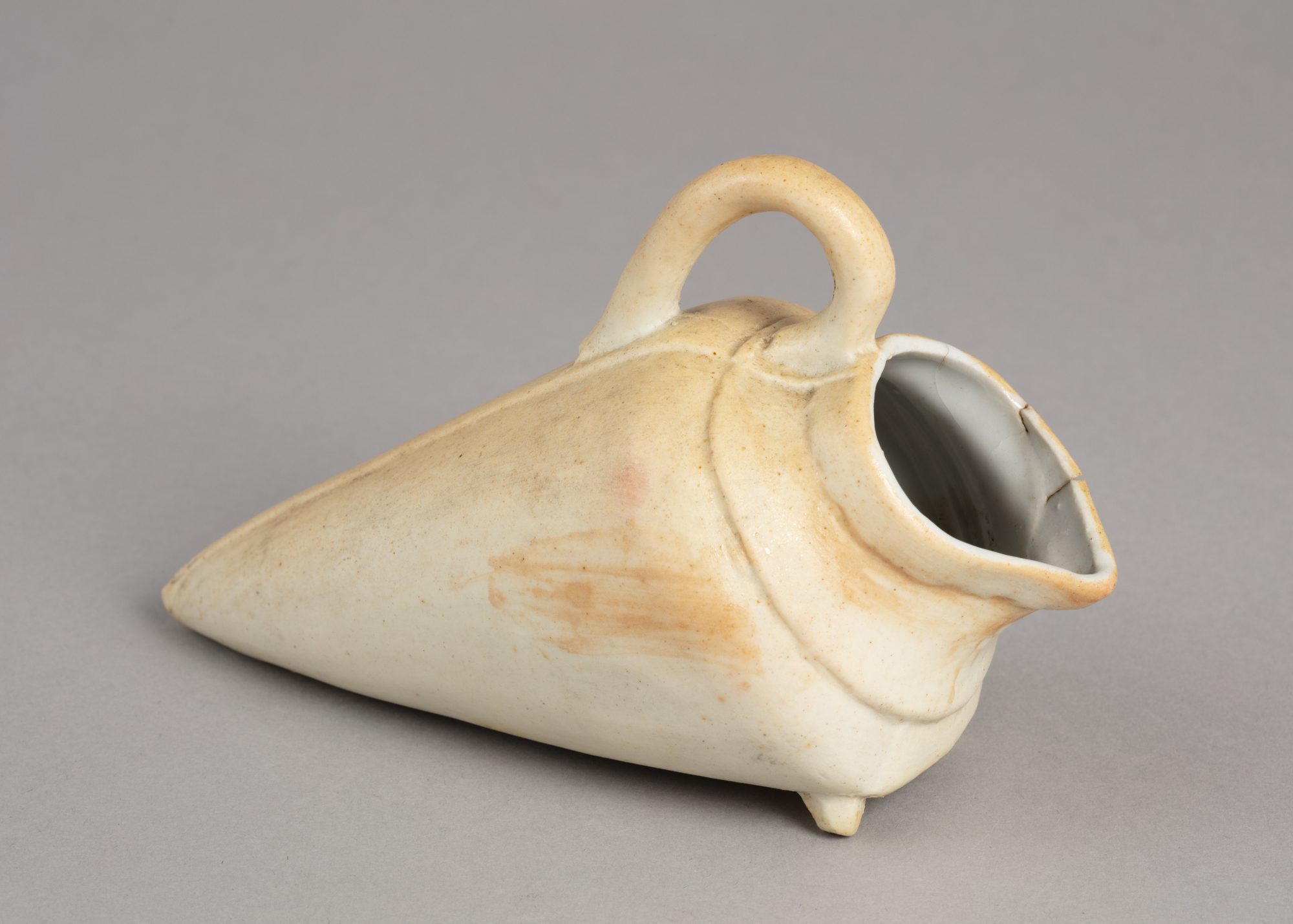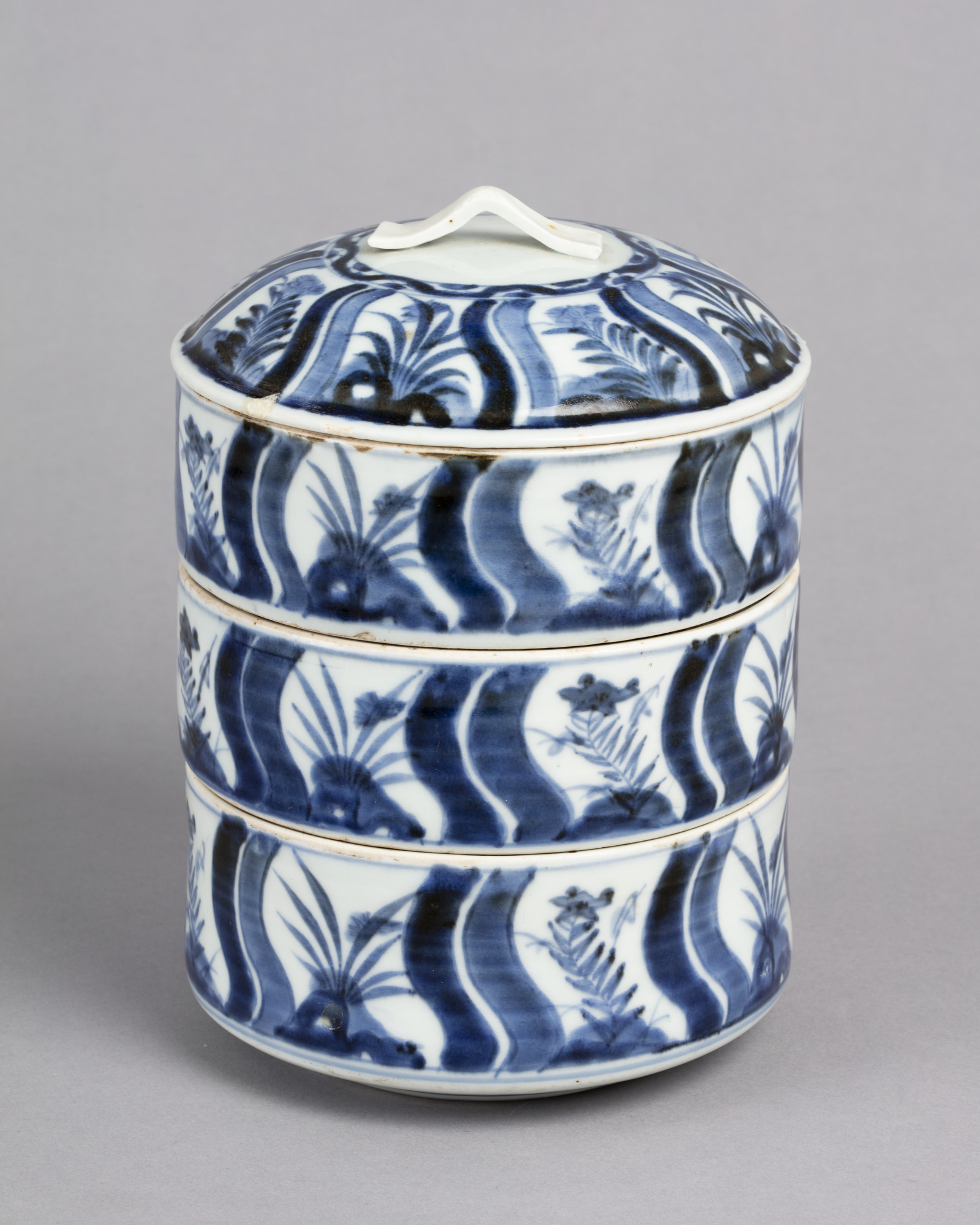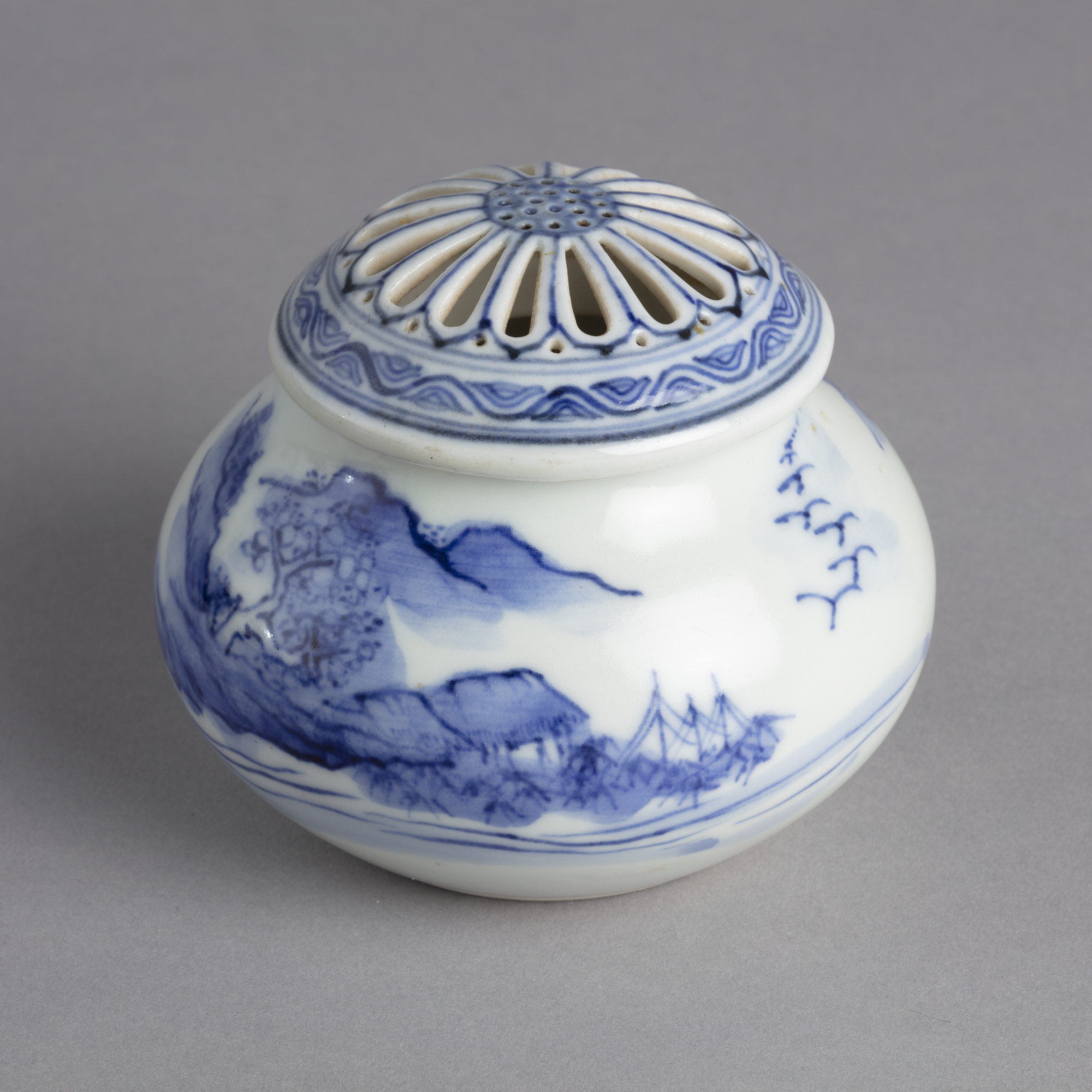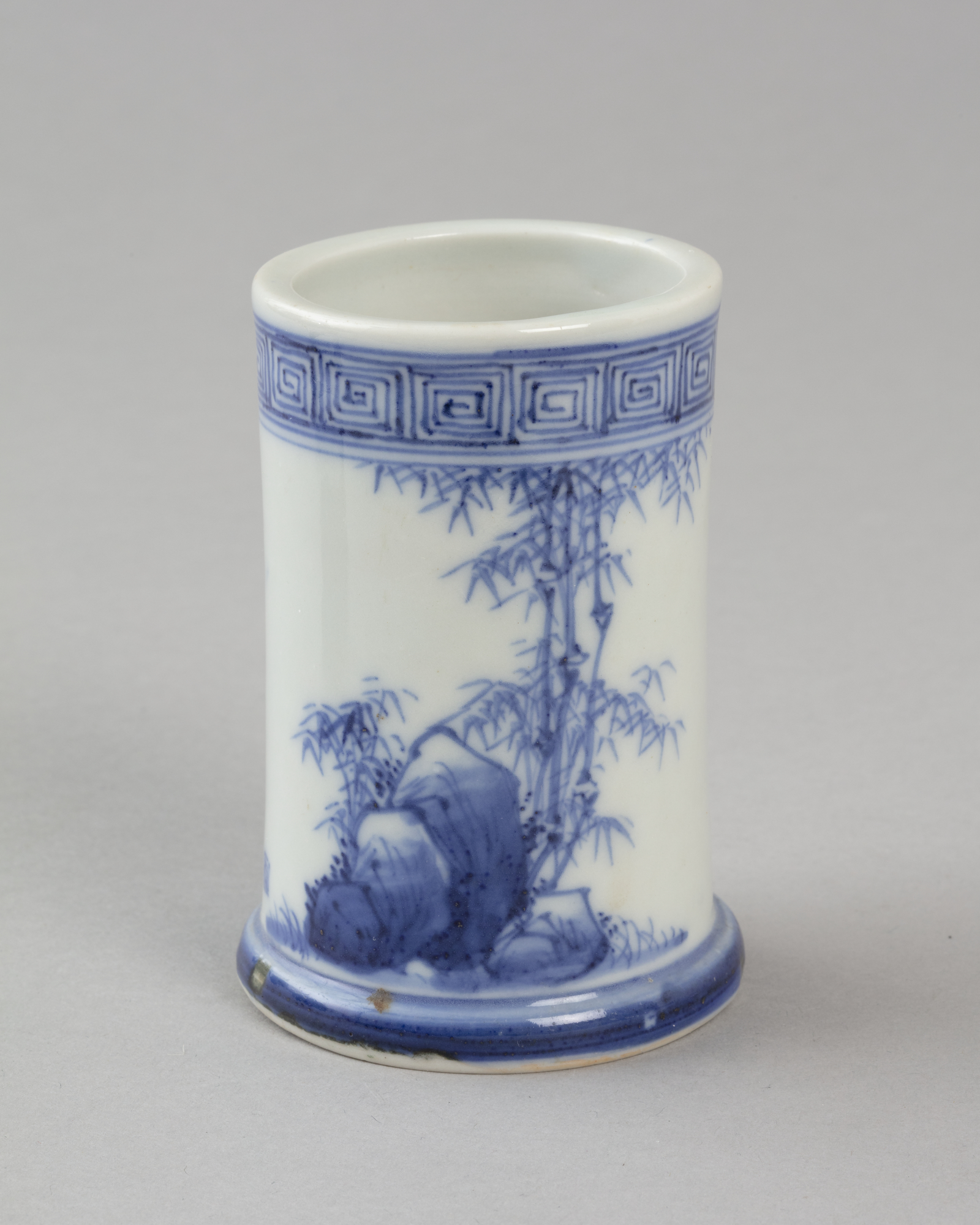Porcelain in Japanese life
暮らしの中の磁器
China reopened their kilns in the 1680s and their affordable, high-quality porcelains attracted Dutch traders. In 1757, the Dutch East India Company ended its official business with Japan. Japanese ceramics continued to be traded to Europe through private trade in smaller numbers.
The craftsmen of Arita turned their attention to the growing domestic market. They made fashionable porcelain in new designs and styles to suit Japanese dining culture and lifestyles.
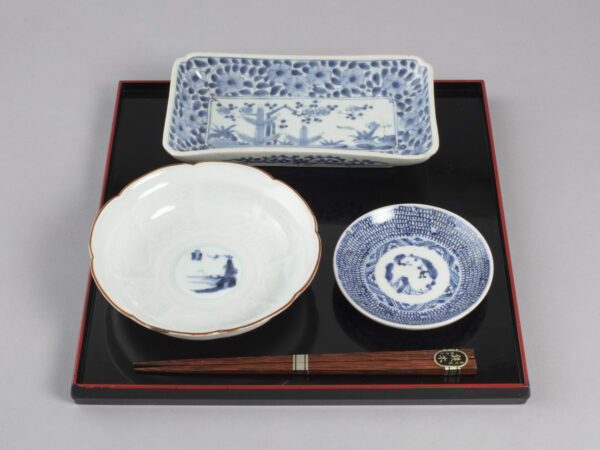
A tray setup
食膳
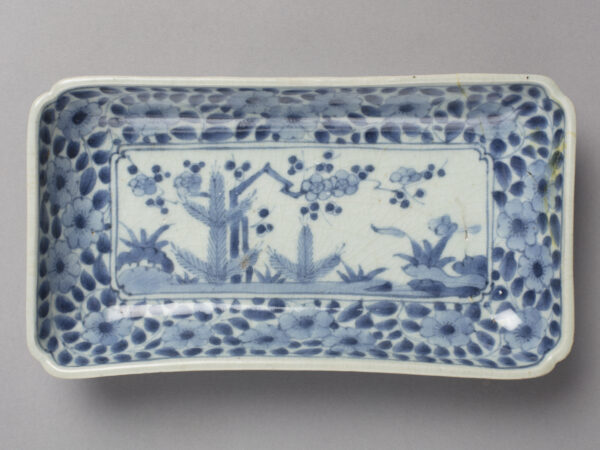
Rectangular dish with young pine and plum blossom
染付若松梅文長皿
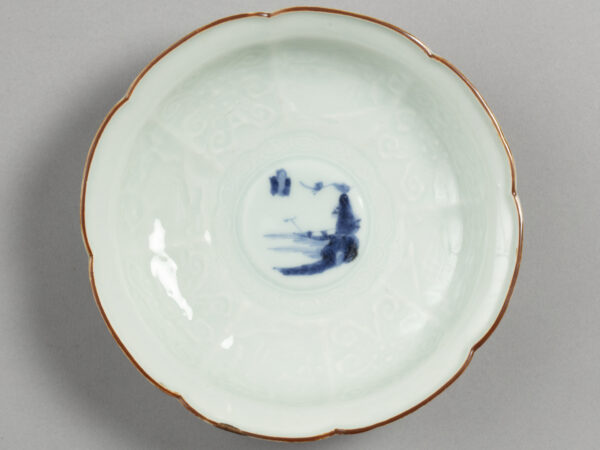
Shallow bowl with landscape design
染付山水文なます皿
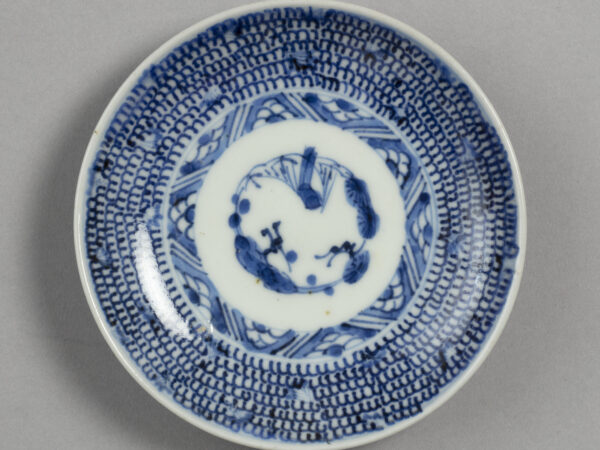
Small dish with design of plum, pine, and bamboo
染付松竹梅文手塩皿
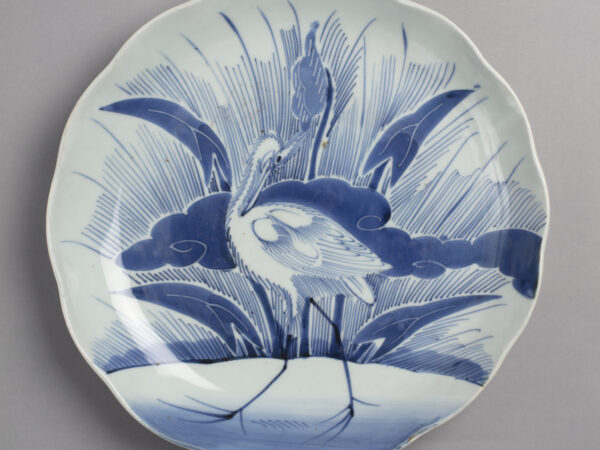
Large dish with design of heron and arrowhead plant
染付沢瀉鷺文大皿

Set of five small square dishes
染付花文手塩皿
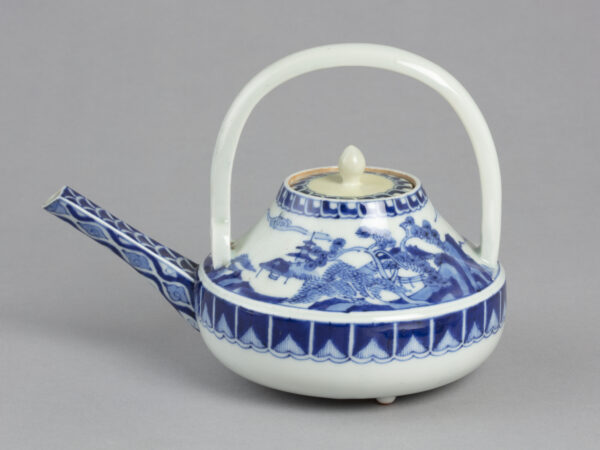
Sake ewer
染付山水文銚子

Sake flask and sake cup
染付水玉文徳利と猪口

Sake warmer
鳩燗

Cup stand with openwork
瑠璃釉透彫盃台
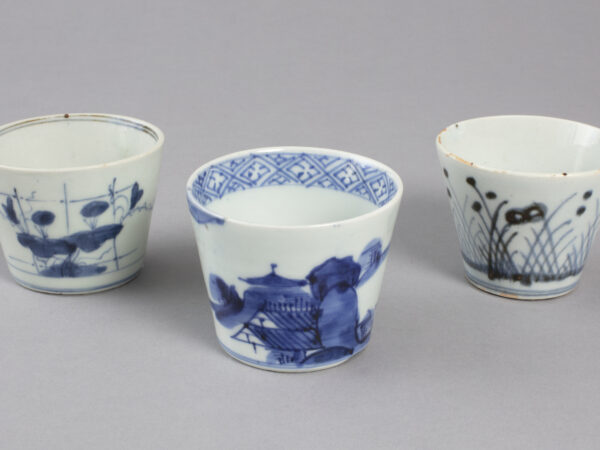
Soba cups
染付猪口
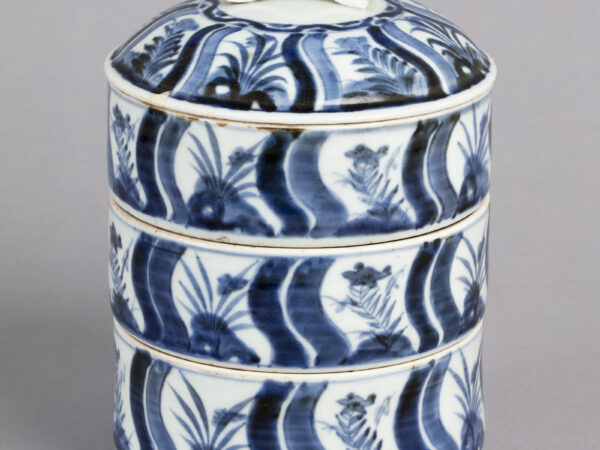
Tiered lidded box with design of rocks and flowers
染付 岩花文 段重

Vase with design of egrets with irises
染付菖蒲鷺文花瓶
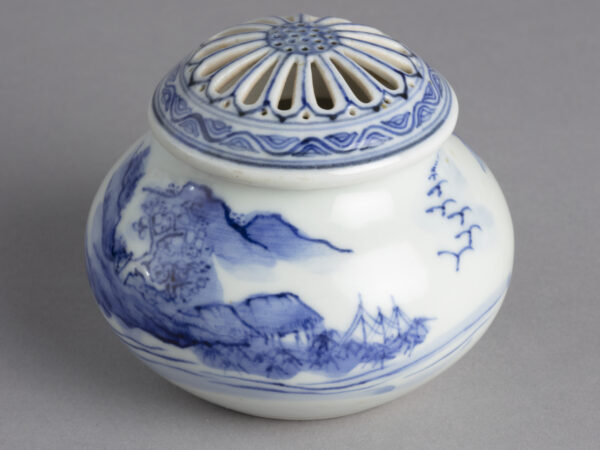
Incense burner with design of landscape
染付山水文香炉



